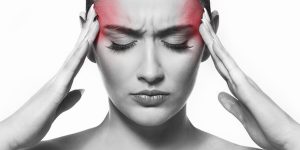How Do I Know if I Have a Headache Problem?

What Are the Treatments for Headaches?
There are many headache remedies. What works for one person may not work for another. However, almost all practitioners consider lifestyle changes that help control stress and regular exercise an important part of headache treatment and prevention. Avoiding situations that trigger your headaches is also vital.
Medications for Headaches
Most tension headaches can be helped by taking pain relievers such as aspirin, Aleve, Tylenol, or Advil. But be careful! Taking too many of these easy-to-buy pills is a major cause of new, more-difficult-to-treat headaches called rebound or pain reliever-induced headaches. If you need to take these drugs often, see your health care provider. Do not use aspirin in anyone under the age of 19 since it may increase the risk for Reye’s Syndrome.
A class of drugs known as triptans have become the mainstay ofmigraine treatment. These drugs include naratriptan (Amerge), sumatriptan (Imitrex, Zecuity), rizatriptan (Maxalt), zolmitriptan (Zomig), and others. These drugs come in several forms, including pills, injections, and skin patches.
Ergotamine is also an effective drug for many headache sufferers. It’s available as a suppository if the vomiting caused by migraines prevents you from keeping a pill down. A therapeutic nasal spray based on the serotonin-inhibiting drug dihydroergotamine (DHE 45) acts quickly to constrict blood vessels and reduce inflammation.
Aspirin, and other nonsteroidal anti-inflammatory drugs (NSAIDs) if taken at the first sign of a migraine attack, also can be effective.
If you have three or more severe, prolonged migraines per month, your health care provider may suggest using preventive treatments on a continual basis. These may include:
- Blood pressure drugs such as propranolol, verapamil, and others
- Antidepressants
- Antiseizure drugs
- Muscle relaxants
- Relaxation and biofeedback techniques
- Avoidance of certain foods
- Cefaly, a small headband device that gives electrical impulses on the skin at the forehead. This stimulates a nerve associated with migraine headaches.
Simple pain relievers do little for cluster headaches because they do not act quickly enough. However, doctors have found that inhaling pure oxygen can be highly effective in providing relief. An anethestic such as lidocaine placed inside the nose helps some people. Using triptans such as sumatriptan (Imitrex) or ergotamine preparations at the first sign of a cluster headache might also bring relief. Preventive medicines are often used at the first sign of a new cluster of headaches. Choices include verapamil, a blood pressure medicine, or a short course of a steroid like prednisone.
Decongestants — and sometimes antibiotic treatment — can relievesinus headaches.
Avoiding Headache Triggers
If you identify factors that trigger your headaches — such as certain foods, caffeine, alcohol, or noise — try to avoid these triggers. To learn more about what triggers your headaches, keep a headache diary that includes answers to these questions.
- When did you first develop headaches?
- How often do you have them?
- Do you experience symptoms prior to the headaches?
- Where is the pain exactly?
- How long does it last?
- At what time of day do the headaches occur?
- Does the eating of certain types of food precede your headaches?
- If you’re female, at what time in your monthly cycle do they occur?
- Are the headaches triggered by physical or environmental factors, such as odor, noise, or certain kinds of weather?
- What words most accurately describe the pain of your headache: throbbing, stabbing, blinding, piercing, for example?
Chiropractic and Osteopathy to Treat Headaches
When muscle strain causes tension headaches, a chiropractor may be able to ease the strain by spinal or cervical manipulation and realignment.
Osteopaths are also able to supplement their treatment of headaches by using various forms of manipulation and soft-tissue techniques to the head, neck, and upper back.
Biofeedback and Relaxation and Headache Control
Biofeedback and relaxation techniques can be effective for headache relief.
Electromyographic (EMG) biofeedback helps you control how specific muscle groups react to stress. This may help prevent or relieve tension headaches.
Acupuncture for Headaches
Several studies have shown that acupuncture may help relieve tension and migraine headaches.
Headaches and Mind-Body Medicine
Hypnosis, deep breathing, visualization, meditation, and yoga may provide relief from pain by relieving system-wide stress and tension. This may help for tension headaches. Hypnosis may lower your perception of pain.
Cognitive behavioral therapy mixes meditation and relaxation with education in coping skills, motivation, and behavior. With the help of a psychotherapist you can learn to change negative thoughts and attitudes, modify the way you respond to stress, and possibly help avoid tension headaches.
Botox for Headaches
Botox, widely known for use as a cosmetic agent, has been FDA approved to prevent chronic migraine headache in adults. The agency defines chronic headache as having a migraine headache 15 or more days per month with headaches lasting four hours a day or longer. To treat chronic migraine headache, Botox is given about every three months as multiple injections around the head and neck. Recent research, though, has not shown effectiveness in the prevention of tension headaches.
How Can I Prevent Headaches?
If you identify factors that make your headaches worse — certain foods, caffeine, alcohol, or noise, for example — try to avoid these triggers.
There are medications and relaxation techniques that can prevent headaches, make them happen less often, and/or make them less severe. Ask your doctor if some of them might be right for you.
Also, Cefaly is the first FDA-approved device for preventing migraines in people over age 18. The portable headband-like device gives electrical impulses on the skin at the forehead. This stimulates the trigeminal nerve, which is associated with migraine headaches. Cefaly is used once a day for 20 minutes, and when it’s on you’ll feel a tingling or massaging sensation.
